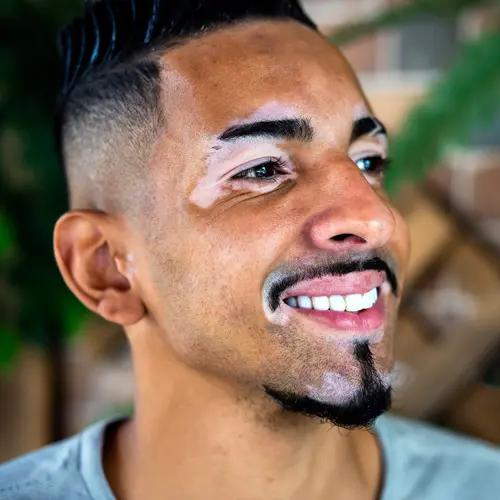Poison ivy, poison oak, and poison sumac are all plants that can cause a temporary, irritating rash when they come in contact with your skin. This rash is a form of allergic contact dermatitis. Dermatitis simply means an irritation of the skin. It's called "allergic contact dermatitis" because the rash is caused by contact with a substance to which you're allergic.
Who Is Allergic to Poison Ivy, Poison Oak, and Poison Sumac?
Have you ever wondered: Can I get poison ivy? What you're really asking is: Am I allergic to the plant? Not everyone is. Up to 85% of Americans are allergic to poison ivy, leaving at least 15% resistant to any reaction.
If you are allergic to poison ivy, you're more likely to be allergic to poison oak and poison sumac, because all three plants contain the same rash-triggering plant oil called urushiol (pronounced yoo-ROO-shee-all). You're also more likely to have an allergic reaction to other plant resins, such as the oil from Japanese lacquer trees (used on furniture), mango rinds, and cashew shells.
Sensitivity to poison ivy, poison oak, and poison sumac varies from a mild to severe reaction, and may not cause any reaction at all the first time you're exposed. Some adults who reacted to poison ivy as children may find that they are now less sensitive. Some may even lose their sensitivity altogether.
What Causes the Rashes of Poison Ivy, Oak, and Sumac?
Many people break out in a rash when urushiol touches the skin. And even if you don't recall touching the leaves of poison ivy, oak, or sumac, you may have unwittingly come in contact with their roots or stems.
Urushiol quickly penetrates the skin, often leaving red lines that show where you brushed against the plant. Symptoms appear 24 to 72 hours after exposure. Scratching the itchy rash doesn't cause it to spread but can prolong skin healing and cause a secondary infection. The rash isn't contagious, so you won't spread it to others by going to school or work.
Three types of transmission can occur:
- Direct contact with the plant
- Indirect contact when you touch pets, gardening tools, sports equipment, or other objects that had direct contact with the plant
- Airborne contact from burning these plants, which releases particles of urushiol into the air that can penetrate the skin, eyes, nose, throat, or respiratory system
What Are the Symptoms of an Allergic Reaction to These Plants?
Symptoms, which generally last from one to two weeks, include:
- Red streaks or patches
- Itching
- Rash
- Swelling
- Blisters that may "weep" (leak fluid) and later crust over
- Inflammation and a burning sensation
Does it matter which plant you're exposed to? Poison ivy, oak, and sumac all fall into the plant genus called Toxicodendron, so the allergic reaction to all of these plants has the same name: Toxicodendron dermatitis. There are actually four poisonous plants in this group, since poison oak has both a western and an eastern variation. All four plants contain urushiol, so the skin reaction and treatment are essentially the same.
How Are Poison Ivy, Oak, and Sumac Rashes Diagnosed?
Poison ivy, oak, and sumac are generally diagnosed by their common symptoms of a rash, blisters, and itching following activity outside in a forest or field, but if you have any doubt, ask your doctor.
How Are These Rashes Treated?
Self-care for a mild rash includes:
- Wash the area well with mild soap and lukewarm water as soon as possible after contact.
- Wash all clothes, shoes, socks, tools, pets, and toys that may have become contaminated.
- Cool compresses may help during the blistering phase.
- Use a topical corticosteroid cream on the rash as directed by your doctor.
- Try calamine lotion for the itching, but avoid skin products that contain anesthetics or antihistamines, which can cause their own allergic reaction.
- To help relieve the itch, try cool showers or a mixture of baking soda and water applied to the area. If sleep is a problem because of the itching, try an over-the-counter oral antihistamine at night.
Call your doctor or a dermatologist for:
- Severe blistering, swelling, and itching
- Symptoms in sensitive areas such as the eyes, lips, throat, or genitals
- Fever
- A rash over large areas of your body
- A rash lasting longer than a week to 10 days
- Blisters that become infected with pus
Get immediate medical help for any difficulty breathing or severe coughing after exposure to burning plants.
In some cases, an oral steroid or other medication may be needed to relieve severe symptoms.
Can I Prevent Rashes From Poison Ivy, Oak, and Sumac?
Remember the old adage: "Leaflets three, let them be." Poison ivy and poison oak have a triple-leaf structure you can learn to recognize -- and then avoid. Avoid any contact with these plants when possible.
Cover your skin completely when hiking, camping, or working in forests and around shrubs. Wear long sleeves, long pants, gloves, socks, and boots. Remember that you can also get a rash from indirect contact from clothes, pets, or tools that have urushiol on them.
Ask your doctor or pharmacist about over-the-counter skin products with bentoquatam. It helps protect the skin from urushiol if you work outside in forestry or other jobs at risk of frequent exposure. You apply this product to skin that’s most likely to touch the plant’s oil, such as your hands, arms, and legs. To get the protection you need, apply an ivy blocker 15 minutes before going outdoors, and reapply as indicated on the package.

